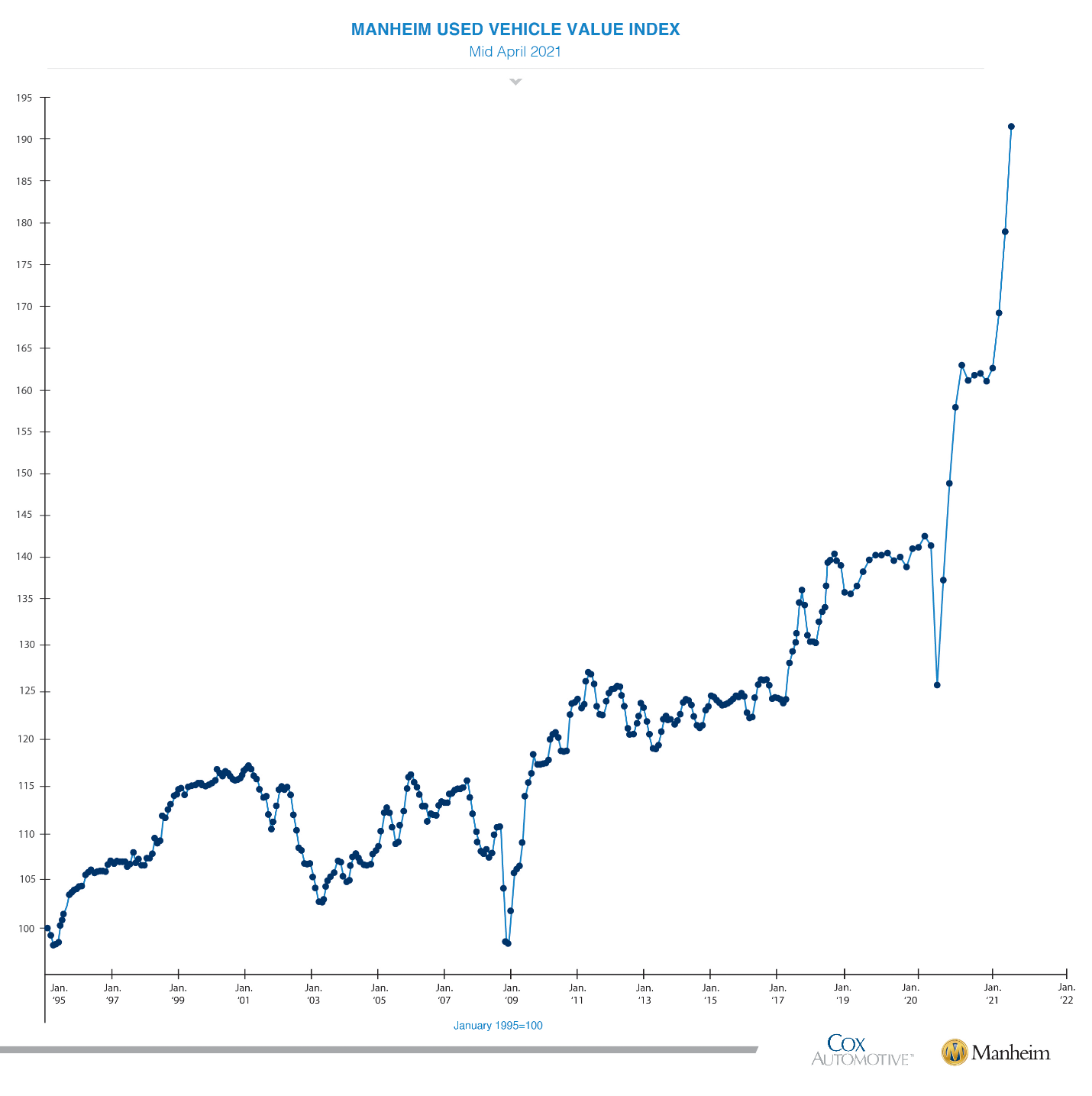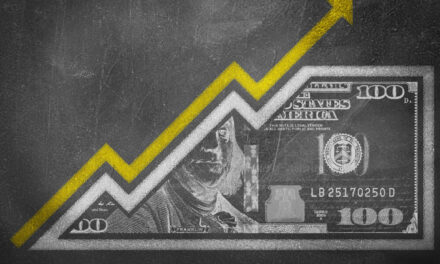As the Federal Reserve continues telling consumers inflation isn’t a problem, those in need of an affordable used car are seeing a problem. Used car prices are rising.
Affordable used cars have long been a tool for changing the economic security of a family. Used cars are a primary means of getting to work in many parts of the country. They are also the first cars for many recent graduates of high school and college.
Right now, affordable used cars are increasingly difficult to find.
One of the most important economic indicators to follow for auto buyers might be the Manheim Used Vehicle Value Index. Used car prices are up 52.2% compared to a year ago.
Used Car Prices Are Up 52.6% in One Year

Source: Manheim.com.
Everyday Americans Threatened By Ballooning Used Car Prices
Used cars do tend to increase in value as the economy recovers from recessions. The chart shows prices of used cars jumped after past recessions. In 2009, prices rose 19.9% in the year after bottoming.
One reason that prices go up in a stronger economy is that demand increases. That’s only part of the explanation right now.
Cox Automotive estimates that consumers are buying about 40.5 million used cars a year. That’s more than double the pace of sales a year ago but down from last summer’s pace of 41.5 million.
While demand is up, supply is down. Manheim estimates there are about 26% fewer cars in wholesale channels than usual.
Given the high demand and lower-than-average supply, it’s not surprising to learn consumers are paying more for cars.
According to Edmunds, the average transaction price (ATP) for new vehicles was $40,563 in March compared to $38,601 a year ago. The ATP for used vehicles is expected to top $22,600.
This means the average payment on a used car loan is $432 after a down payment of more than $3,300.
Experts expect the trends of high prices and tight supply are expected to continue. Increasingly unaffordable cars may not threaten the economic recovery, but they do threaten the financial well-being of many families across the country.
While I didn’t exactly design the internet, I can take full credit for this.
I’ve created a first-of-its-kind innovation in the financial markets. It allows everyday traders to get ahead making one simple trade per week.
Click here to see how it works.
Michael Carr is a Chartered Market Technician for Banyan Hill Publishing and the Editor of One Trade, Peak Velocity Trader and Precision Profits. He teaches technical analysis and quantitative technical analysis at the New York Institute of Finance. Mr. Carr is also the former editor of the CMT Association newsletter, Technically Speaking.
Follow him on Twitter @MichaelCarrGuru.




